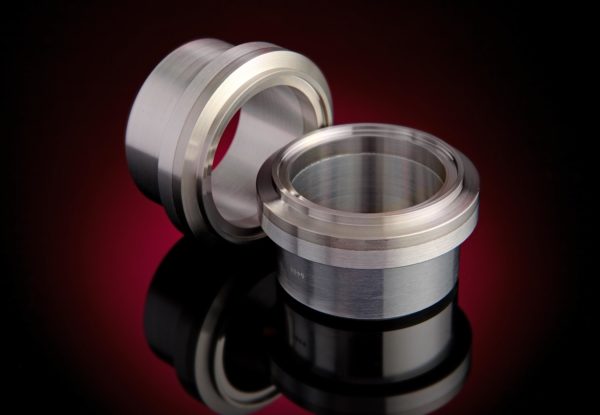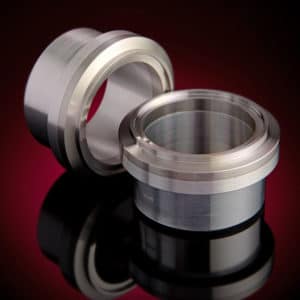Atlas Technologies Introduces Standard Line of Robust Bimetallic Transition Couplings
Standard sized aluminum to stainless bimetallic transitions allow aluminum tube or pipe to be welded directly to stainless steel tube or pipe
Atlas bimetallic couplings allow for a clean no-flange transition from aluminum to stainless steel tubes or pipe lines. These joints are highly reliable and have been used in thousands of cryogenic, ultra high vacuum (UHV), and industrial applications for decades.
The all-welded bimetallic joints enable cryogen, liquid, or gas supply lines to transition from one metal to another. After TIG, MIG, or electron beam welded to standard tube or pipe, they provide fully hermetic solution.
Applications for Bimetallic Couplings
- Cryogen delivery lines for liquid nitrogen, hydrogen, helium, and many other industrial gases and liquids
- Custom application
Advantages of Aluminum
- Weight reduction
- High Vibration dampening
- High chemical resistance
- Thermal conductivity
- Low contamination
- Low magnetic permeability
- Low outgassing
- Low cost of ownership
- Low nuclear activation
- Space and weight reduction
- Superb machinability
Atlas supplies these fittings to meet standard Schedule 40 and 80 pipes in the most rapid delivery available:
- tube to tube
- schedule 40 / schedule 10
- schedule 40 / schedule 40
- schedule 80 / schedule 40
The Atlas Stainless Bond Aluminum bonded to stainless using Atlas patented interlayers of Copper – Titanium – high purity Aluminum. This is a very robust system. It is able to handle cryogenic temperatures cycling and resulting mechanical deformations, and provides Chemical Intermetallic Isolation during weld up.
- Interlayer Thickness & Bond Strength Because the interlayers between the primary metals, stainless steel and aluminum, are very thin Cu (0.03”, 0.76mm), Ti (0.012”, 0.3mm), Al (0.04”, 1.0mm) the strength of the interface is greater that the strength of constituent metals. The average shear strength of this interface has been tested to 11,000 Psi,. Our experience shows that the base metal 1100 Aluminum layer will fail prior to a bond failure. The bonds depending on the part geometry will withstand an internal pressure of well beyond of 10 Bar.
- Coefficient of Thermal Expansion (CTE) At cryogenic LN2 and liquid He temperatures the CTE between interlayers SS (9.4), Cu( 9.8), Ti(5.5) AL(13.2) and Al(13.2) act as dampening spring. These layers give cryogenic components a robust spring-like resilience for repeated cycling of the bond to temperatures to –196C and lower.
- Chemical Intermetallic Isolation at Welding Temperatures Aluminum bonded to Stainless using Atlas patented Stainless – Copper – Titanium – high purity Aluminum – Aluminum interlayers is also very robust chemically. The interlays and hence the materials are rated at temperatures of 300◦C. Using proper welding procedures the layers insulated from intermetallic chemical reactions from occurring during weld up.
- UHV Compatible Material All Atlas bonded material is helium leak checked to better than 1 x 10-9 Std. Torr He Lt/Sec.
Founded in 1994, Atlas Technologies has developed many of the products which have led to the aluminum ultrahigh vacuum revolution. The company prides itself on developing new products that better serve their customers, often designing and manufacturing projects to solve some of the most difficult UHV challenges. Their bimetallic technology aids the company in improving functionality and helps their customers think about projects beyond stainless steel. From nuclear medical applications to semiconductor OEMs, Atlas Technologies applies innovation to crucial processes and delivers superior results that advance industry standards.

